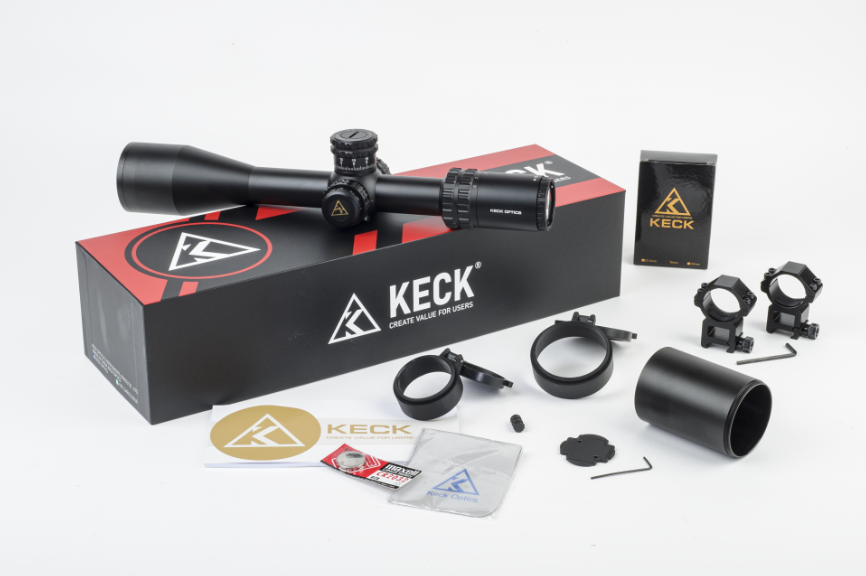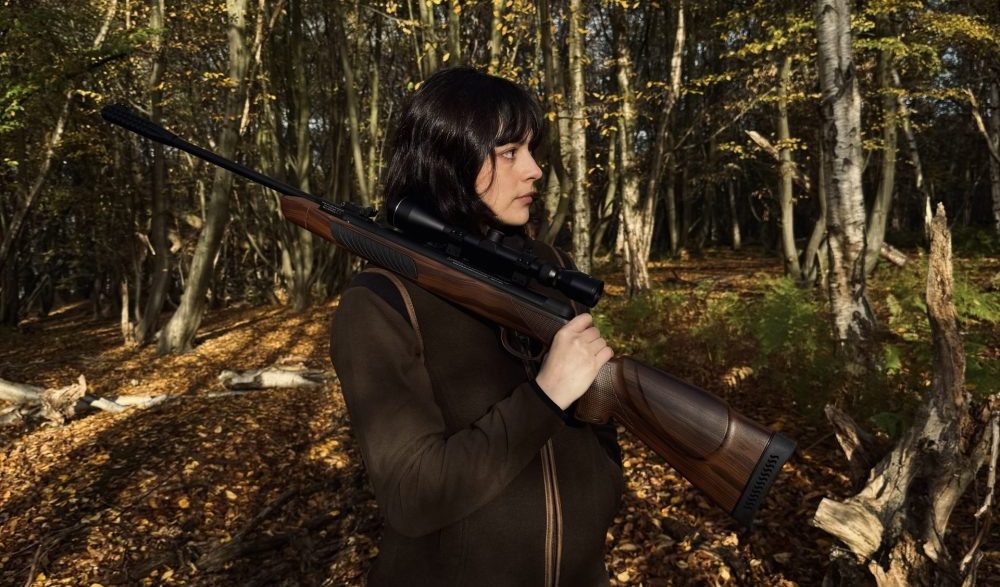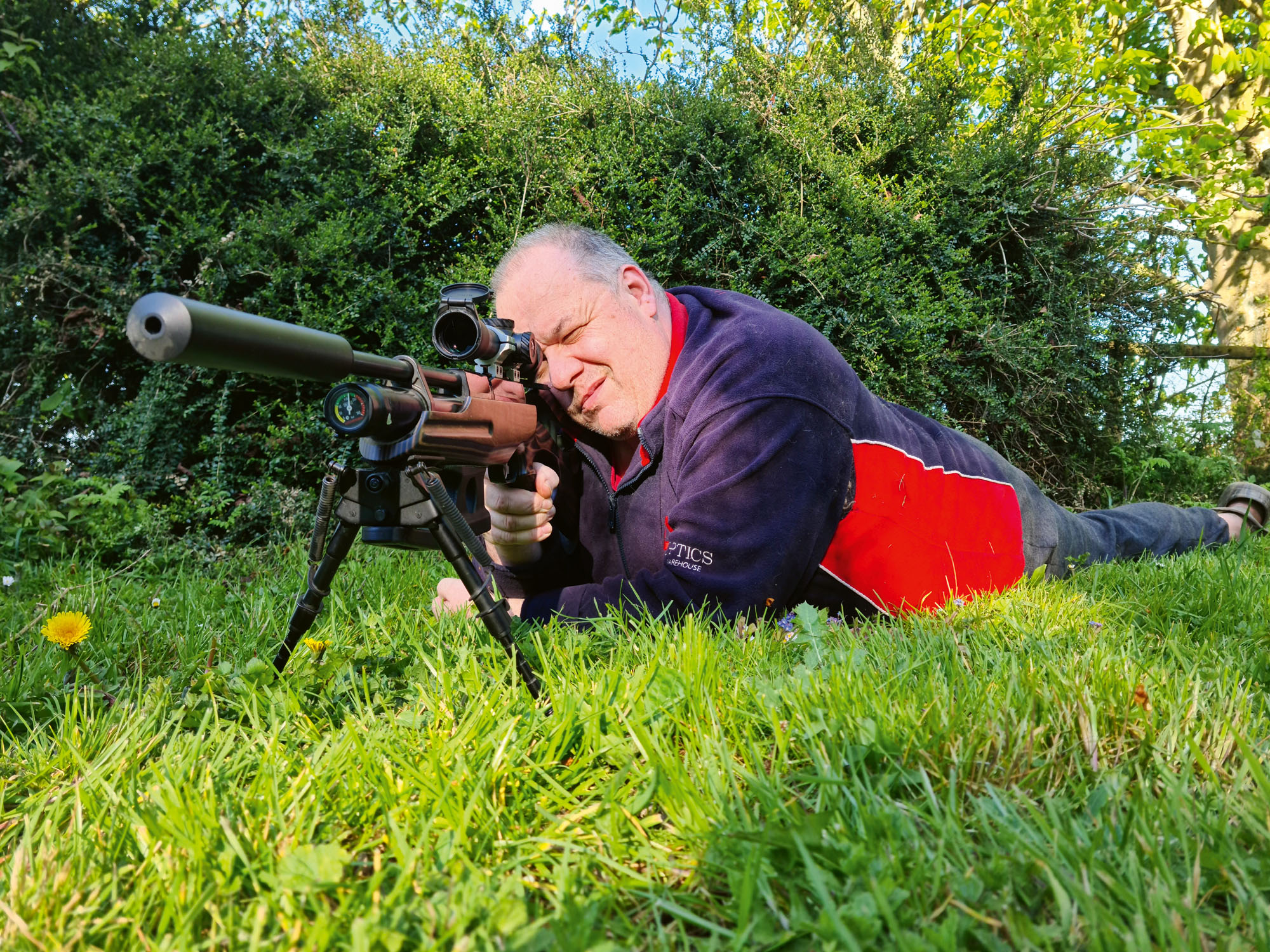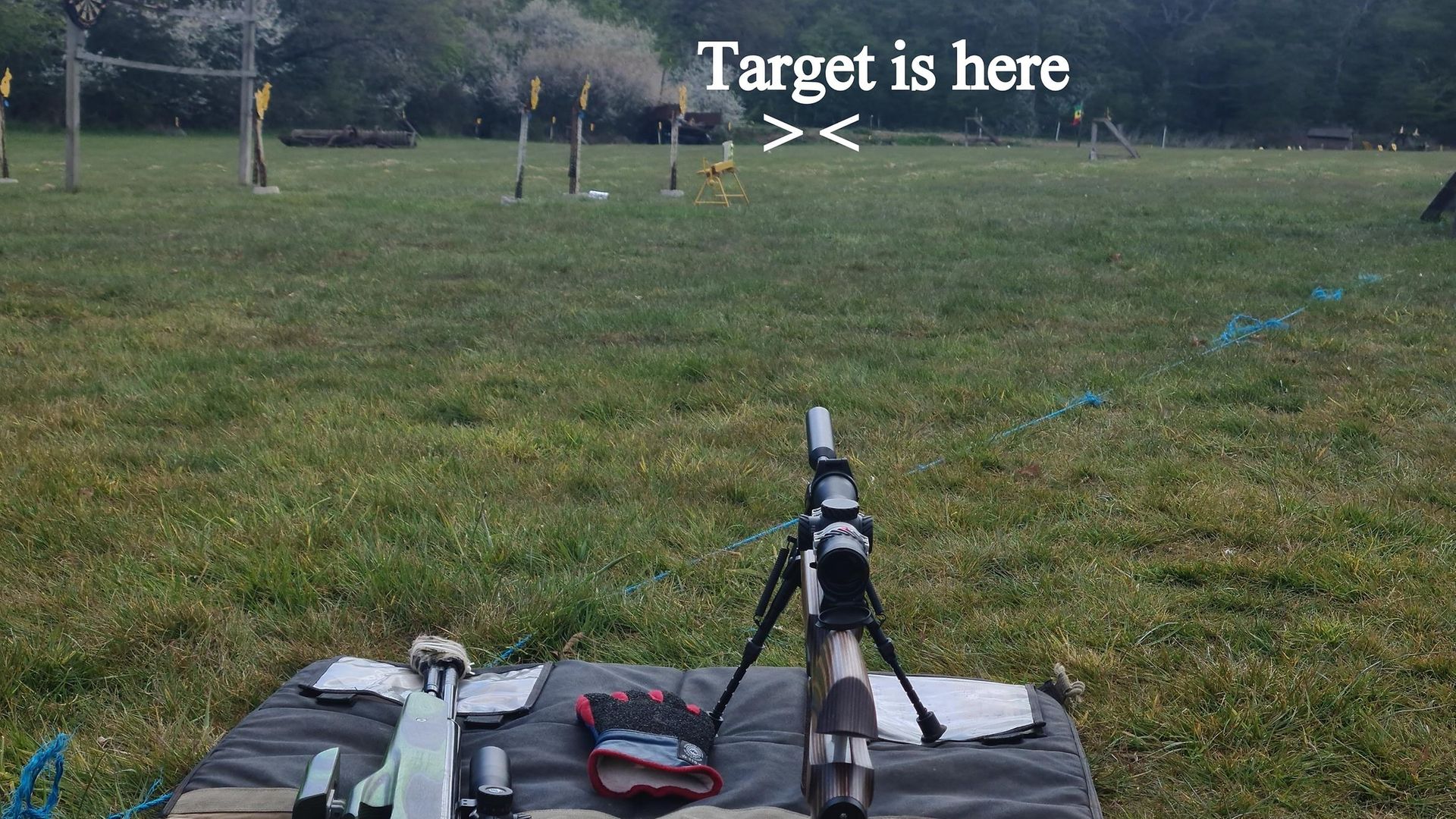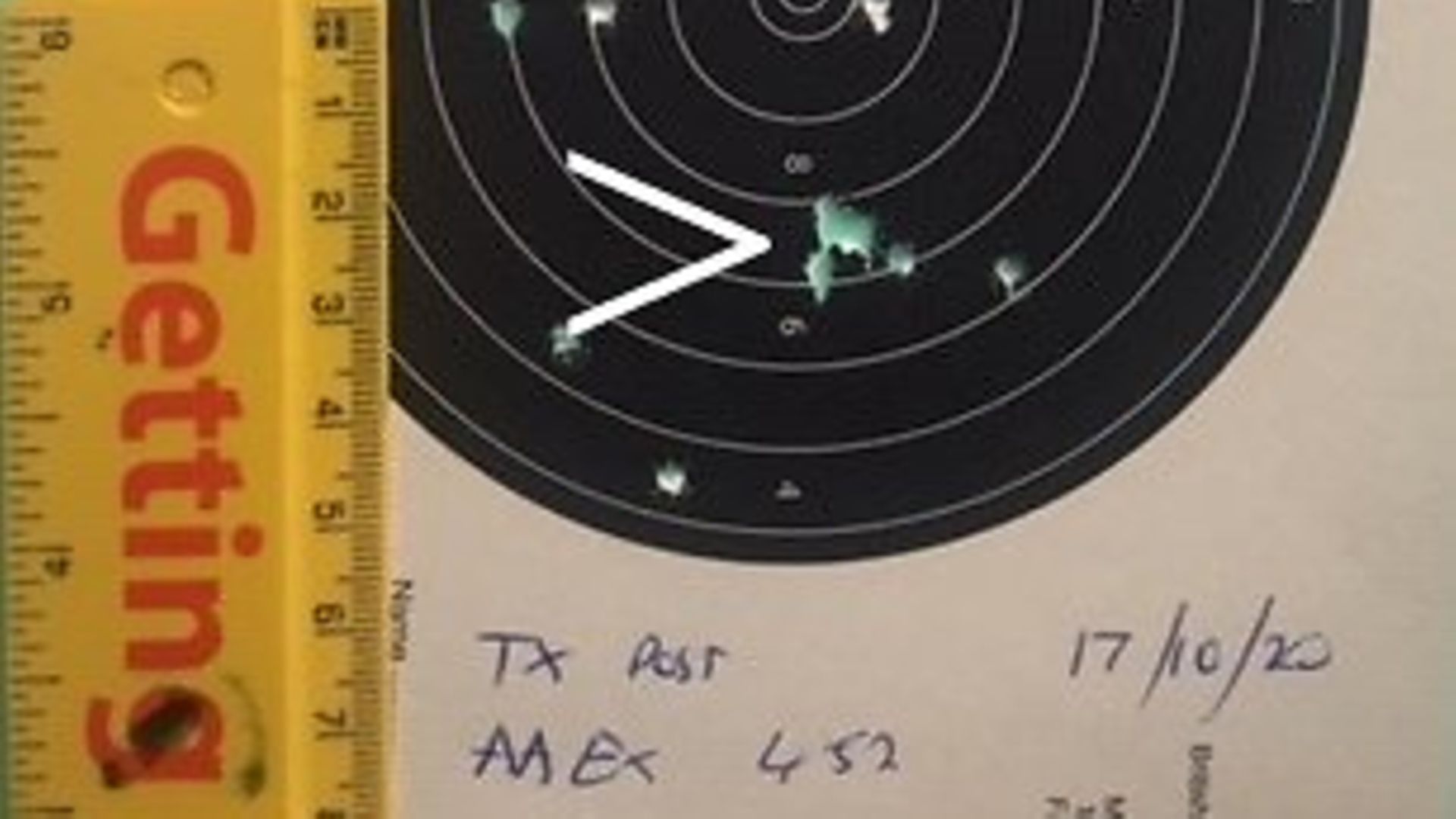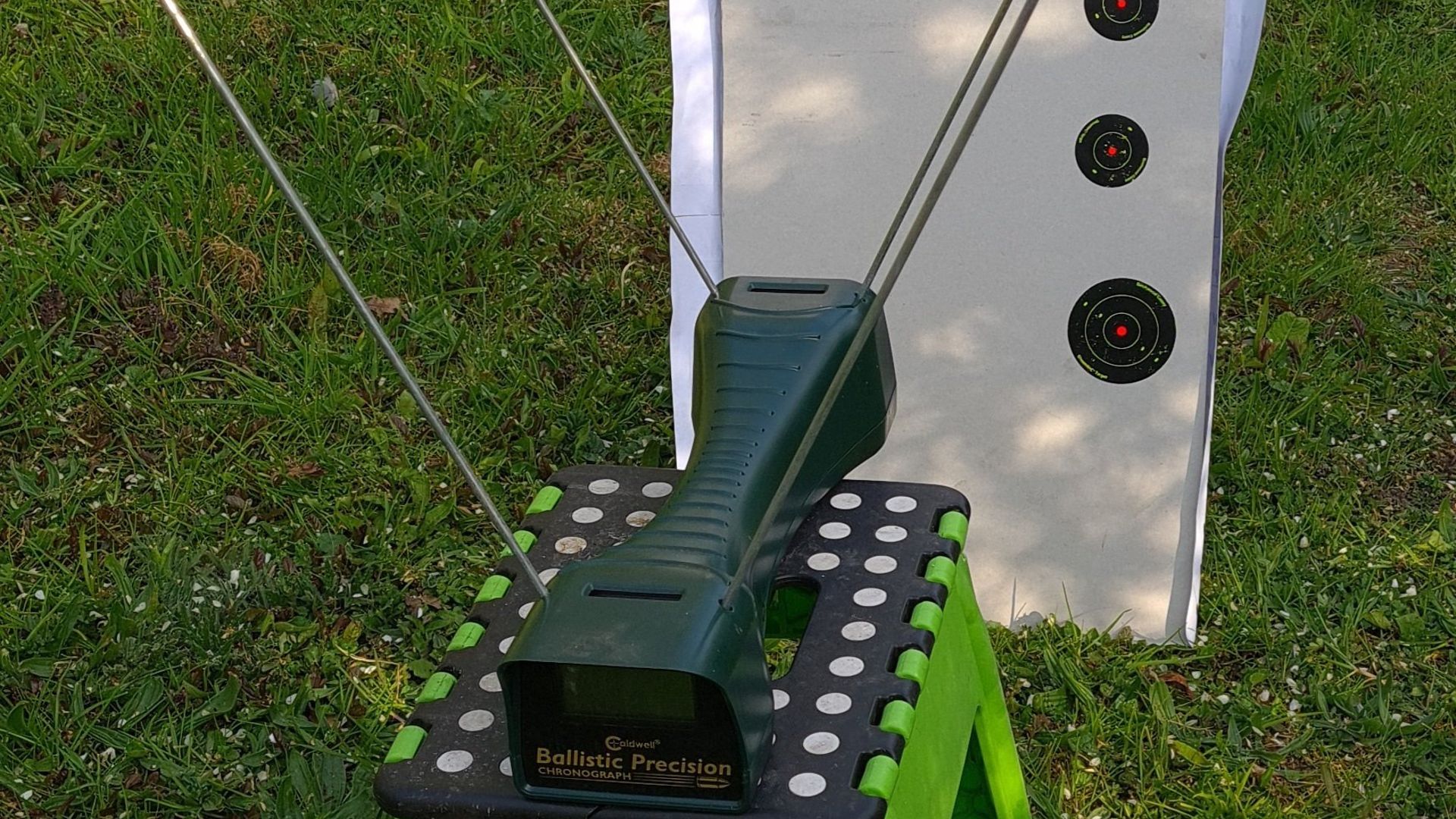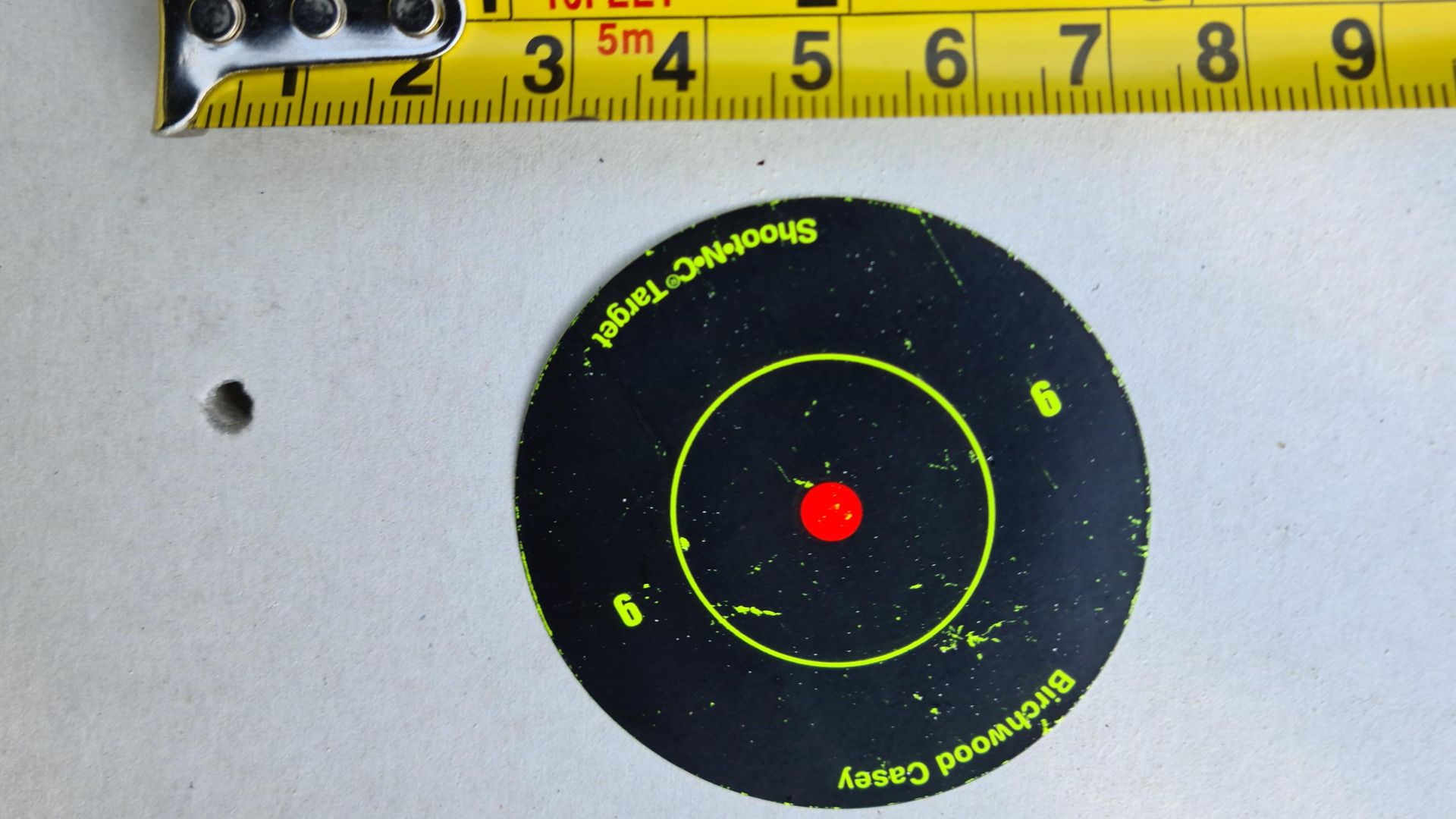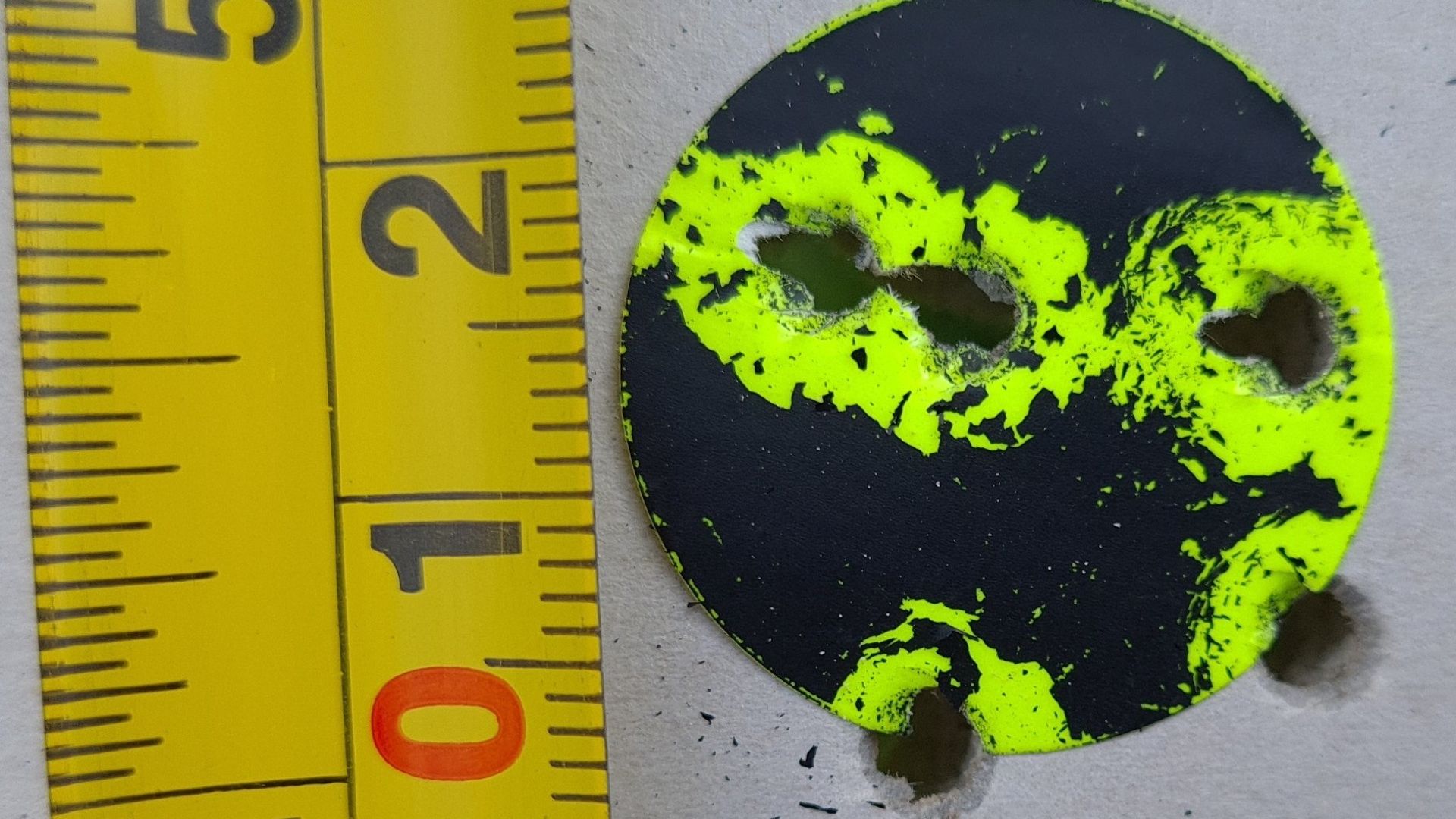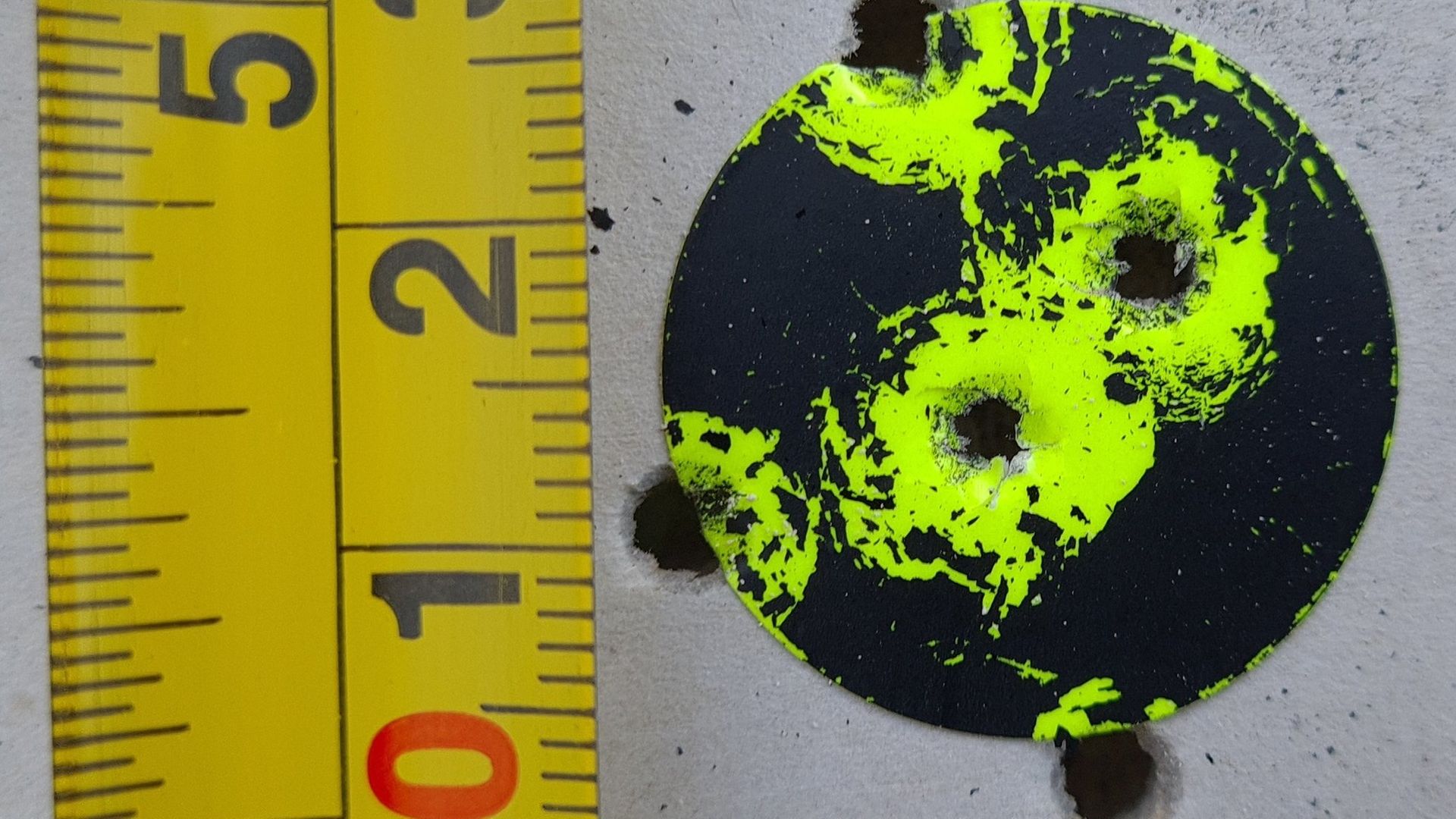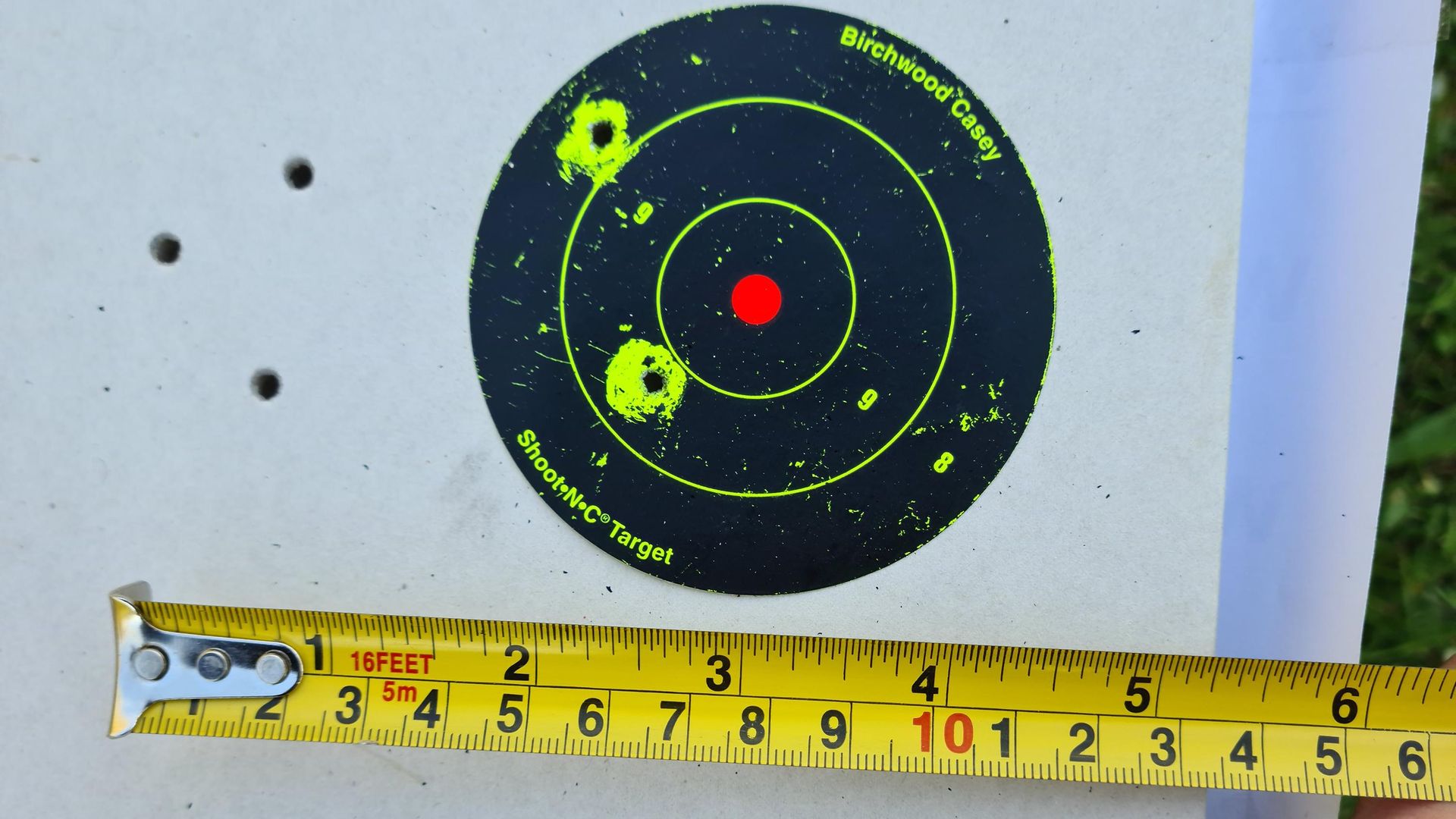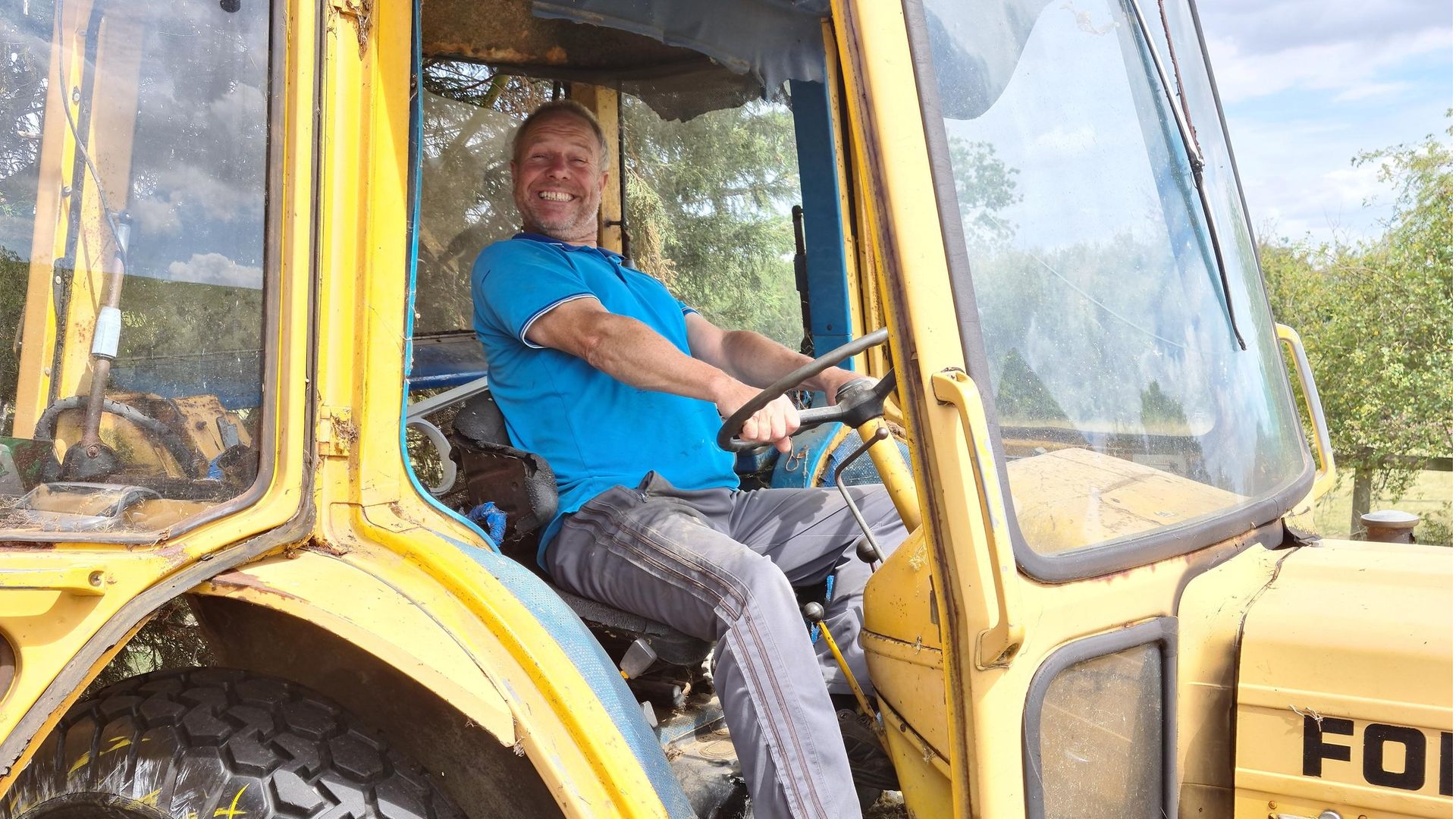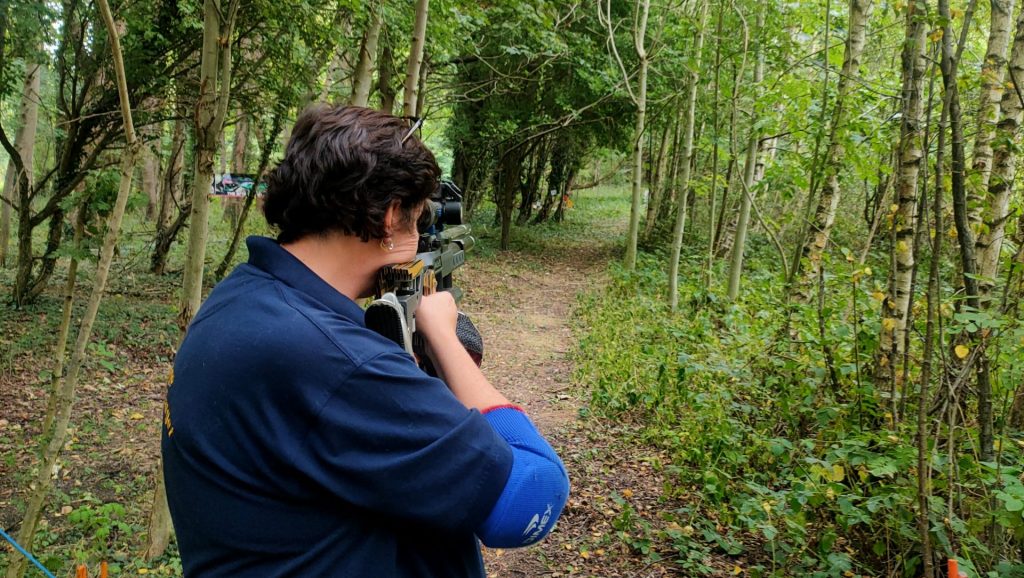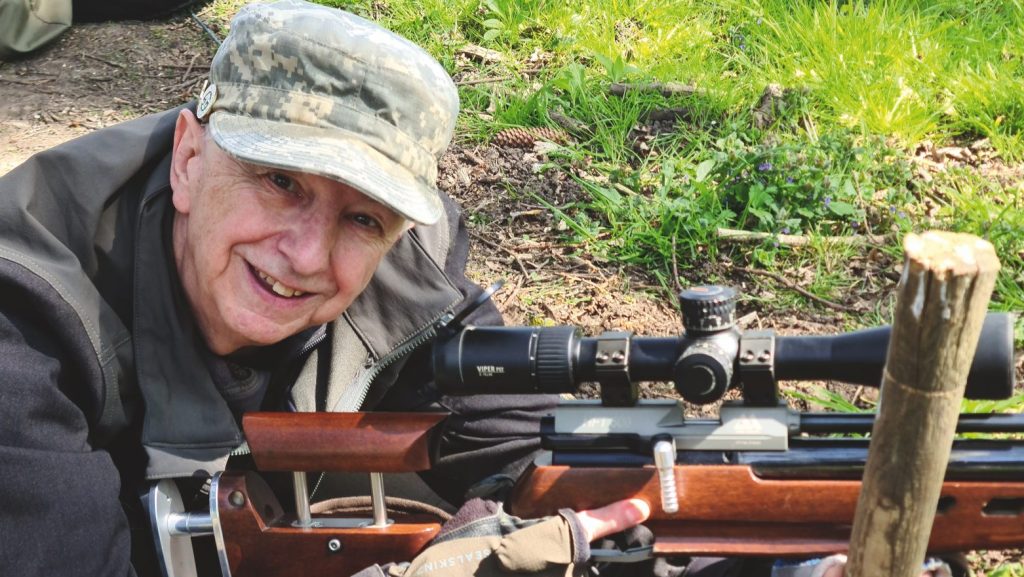How far can a sub-12 ft.lbs air rifle shoot?

How far can I shoot a sub-12 ft.lbs air rifle and still be accurate? Top HFT shooter and all-round airgun guru Gary Chillingworth enters the debate!
Last month, I received a great email from one of our readers, Richard G, who wanted to know how far a sub-12 ft.lbs rifle could shoot and still be accurate. The problem is, for a true long range test, you will need an indoor environment because wind at long range is a huge problem. If you read my article last month on the PCP v springer, you will have seen that even a tuned spring gun can shoot a 1cm group at 55 yards, but beyond that, it is a whole different story.
So, to be a true long-range test, we need to go out to 100 yards but there are no indoor ranges that I know of where we can do this. So, the best option is to run this test outdoors and the only place that was available to me was my home club of Maldon and District. Now, M.A.D. is a huge place with multiple ranges, but our plinking range only goes out to 75 yards. However, we do have a meadow area and that is around 100 yards long if you shoot from one end to another, but this means that you will be shooting across 20 practice lanes.
Luckily, the head honcho of Maldon is Richard Woods, and over the years, Richard and the M.A.D. Team have helped me with endless articles and given me a place to shoot and to test, and with a bit of begging and the offer of a double cheese quarter-pounder and a McFlurry, the deal was done. It was agreed that I could turn up at the club early in the morning and do the test before the plinkers arrived, and this was good for two reasons; firstly, it would prevent the meadow area from being shut down for too long, and secondly, if you shoot just as the sun is coming up, there is usually less wind, and for our test, this would be a huge advantage.
NOT JUST THE WIND
So, early on a Thursday morning, I packed the car with everything I needed and turned up at M.A.D. I set out my targets and a Caldwell chronograph downrange so that I could see the speed that the pellets were travelling, and as the sun started to peek over the horizon I started to shoot.
The rifles that I chose to use were my Weirauch HW100KT and my trusty TX200HC, because I wanted to see how close the springer could get to the PCP. The reason I chose the HW100KT over my HFT500 was that the Weirauch has a bipod attachment, and that would come in very handy for this test. Both the rifles were fitted with an Optisan CP scope, although one was a 3-12-32 and the other a fixed 10.
I also had an anemometer to measure the wind and this told me that at the peg, the wind was 5kph and at the target it was 6 to 7kph and luckily, it was coming from directly behind me. I placed a 25mm ‘shoot and see’ target on the board and fired my first shots. My rifle was zeroed at 40 yards and I knew that the drop was going to be around 25” or 8 mil-dots and even in this light breeze I was amazed at how much movement right to left I got – around 2”, even though it was a tail wind. My next shot was less, at around 1.5”, and then I realised it wasn’t only the wind.
TERRIBLE GROUP
When I pulled the trigger at these ranges, even the slightest movement was causing a huge miss at 100 yards, so with this in mind, I readjusted how I was lying, started to send rounds downrange, and before long I was getting a group that was only slightly bigger than the 25mm ‘shoot and see’ target – and I was getting most of the pellets landing in the black. My best group at 100 yards with the HW100 was 28mm for 5 shots.
I placed a new sticker just to the left and decided to sit and wait for a few minutes before taking the shot. This was to simulate sitting still and then shooting. After a 10-minute wait, I gripped the rifle and fired and missed the target by 5cm. It was clear to me that the only way to get tight groups was to walk the pellets in gradually, build the muscle memory and use my senses to judge when the wind had dropped all the way to the target.
I then repeated the experiment with the TX, and strangely, dialled in to the good groups much quicker then I had with the PCP. The reason for this was that either I had got my eye in, or I spend way too much time with this gun – it’s true to say that it fits me like a glove, and I know it inside and out, so I was almost instantly matching the PCP, or to be perfectly honest, I was 1mm bigger at 29mm for five shots.
The chronograph that I had set up downrange didn’t register all the pellets, although we had a few readings and they ranged from 380 to 410fps, so it seemed to be the case that as the pellets travelled downrange, they were massively affected by the wind and lost most of their momentum. As the test was finishing, I noticed that the wind had changed and was now blowing right to left, but still at around 5kph, so I took five more shots and only managed to hit the ‘shoot and see’ target twice. When I looked at the board afterwards, I was hitting around 8cm to the left and 3 to 4cm up and down – a truly terrible group!
LONG-RANGE SHOWDOWN
So, where are we? Well, in a open environment with no wind, it is possible to get a sub-12 ft.lbs. air rifle to shoot a group of under 30mm, and I am sure that with some more work, I could probably reduce this a bit further, but I’ve learned that at these sorts of ranges, even the slightest breath of wind, or a slightly heavy pellet, or the most minute of twitches, or your head being slightly out of alignment, or your underwear pulling to the left, has a massive effect on accuracy – and that is why sub-12 ft.lbs. should never, ever be used for hunting at these ranges.
Just as I finished this piece, I’ve had a great message from Mark Denning, a club champion at Nottingham Rifle Club and he regularly shoots 100 yards-plus on their indoor range with a sub-12 ft.lbs rifle. Mark gets groups of just over 5p-size with his .22 HW97, as shown with this cola can target, so, I have a lot of practice ahead of me to get that good.
The big question is, if we can arrange it, would you like to see a long-range showdown?
Please drop me a line with your long-range stories at garychillingworth36@gmail.com and let me know your experiences – also tell me if I’m going doing anything wrong!
Finally, thanks to Richard for a great idea, Mark for his advice and the Maldon team for their support.

